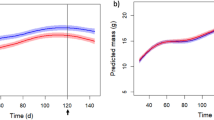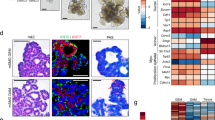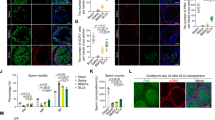Abstract
A SEXUAL dimorphism in the submaxillary gland of mice has been described by Lacassagne1. In the male the secretory tubuli are more developed than in the female. This difference has since been reported as depending on endocrine glands2–4.
This is a preview of subscription content, access via your institution
Access options
Subscribe to this journal
Receive 51 print issues and online access
$199.00 per year
only $3.90 per issue
Buy this article
- Purchase on SpringerLink
- Instant access to full article PDF
Prices may be subject to local taxes which are calculated during checkout
Similar content being viewed by others
References
Lacassagne, A., C.R. Soc. Biol., Paris, 133, 180 (1940).
Lacassagne, A., C.R. Soc. Biol., Paris, 133, 539 (1940).
Leblond, C. P., and Grad, B., Anat. Rec., 100, 750 (1948).
Raynaud, J., C.R. Soc. Biol., Paris, 148, 23 (1954).
Honour, A. J., Myant, N. B., and Rowland, E. N., Cli. Sci., 11, 447 (1952).
Logothetopoulos, J. H., and Myant, N. B., J. Physiol., 134, 189 (1956).
Taurog, A., Potter, G. D., and Chaikoff, I. L., Endocrinol., 64, 1038 (1959).
Author information
Authors and Affiliations
Rights and permissions
About this article
Cite this article
LLACH, J., TRAMEZZANI, J. & FUNES, J. A Sexual Difference in the Concentration of Iodine-131 by the Submaxillary Gland of Mice. Nature 188, 1204–1205 (1960). https://doi.org/10.1038/1881204a0
Issue date:
DOI: https://doi.org/10.1038/1881204a0



